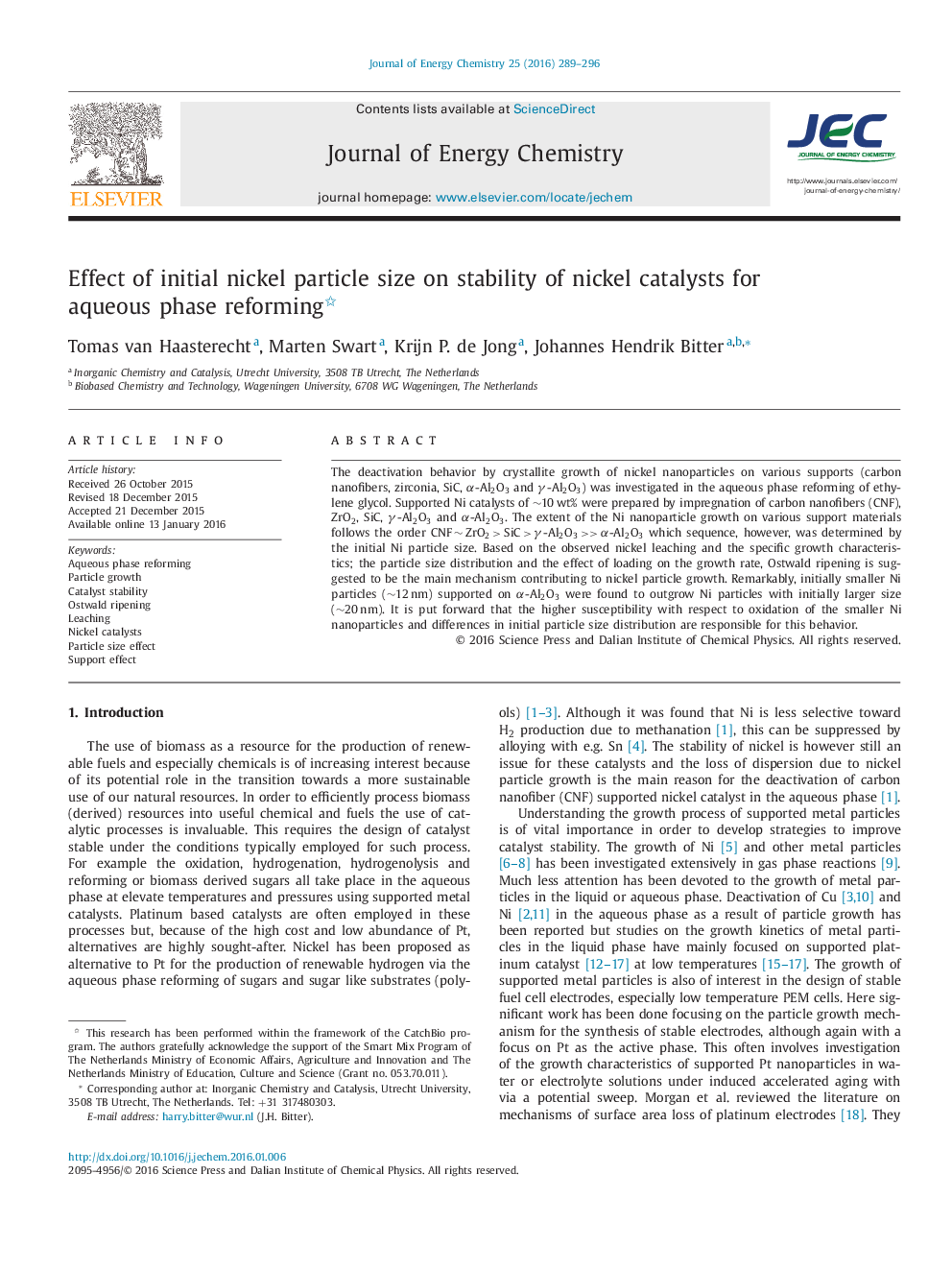| Article ID | Journal | Published Year | Pages | File Type |
|---|---|---|---|---|
| 63724 | Journal of Energy Chemistry | 2016 | 8 Pages |
The deactivation behavior by crystallite growth of nickel nanoparticles on various supports (carbon nanofibers, zirconia, SiC, α-Al2O3 and γ-Al2O3) was investigated in the aqueous phase reforming of ethylene glycol. Supported Ni catalysts of ∼10 wt% were prepared by impregnation of carbon nanofibers (CNF), ZrO2, SiC, γ-Al2O3 and α-Al2O3. The extent of the Ni nanoparticle growth on various support materials follows the order CNF ∼ ZrO2 > SiC > γ-Al2O3 >> α-Al2O3 which sequence, however, was determined by the initial Ni particle size. Based on the observed nickel leaching and the specific growth characteristics; the particle size distribution and the effect of loading on the growth rate, Ostwald ripening is suggested to be the main mechanism contributing to nickel particle growth. Remarkably, initially smaller Ni particles (∼12 nm) supported on α-Al2O3 were found to outgrow Ni particles with initially larger size (∼20 nm). It is put forward that the higher susceptibility with respect to oxidation of the smaller Ni nanoparticles and differences in initial particle size distribution are responsible for this behavior.
Graphical abstractThe extent of nickel particle growth was found to be related to the initial nickel particle size and small nickel particles supported on α-Al2O3 can outgrow nickel particles with a larger particle size.Figure optionsDownload full-size imageDownload as PowerPoint slide
